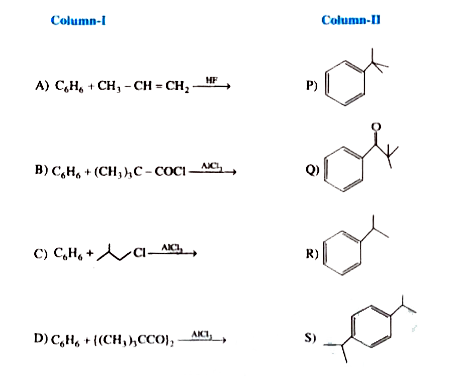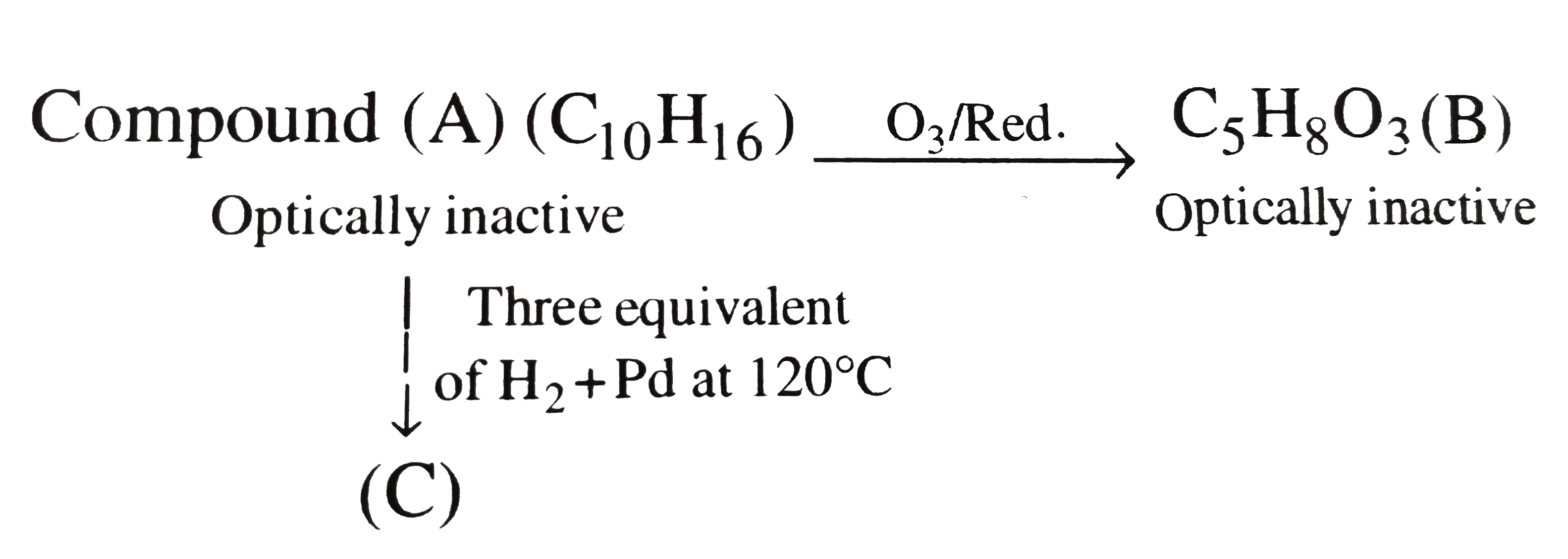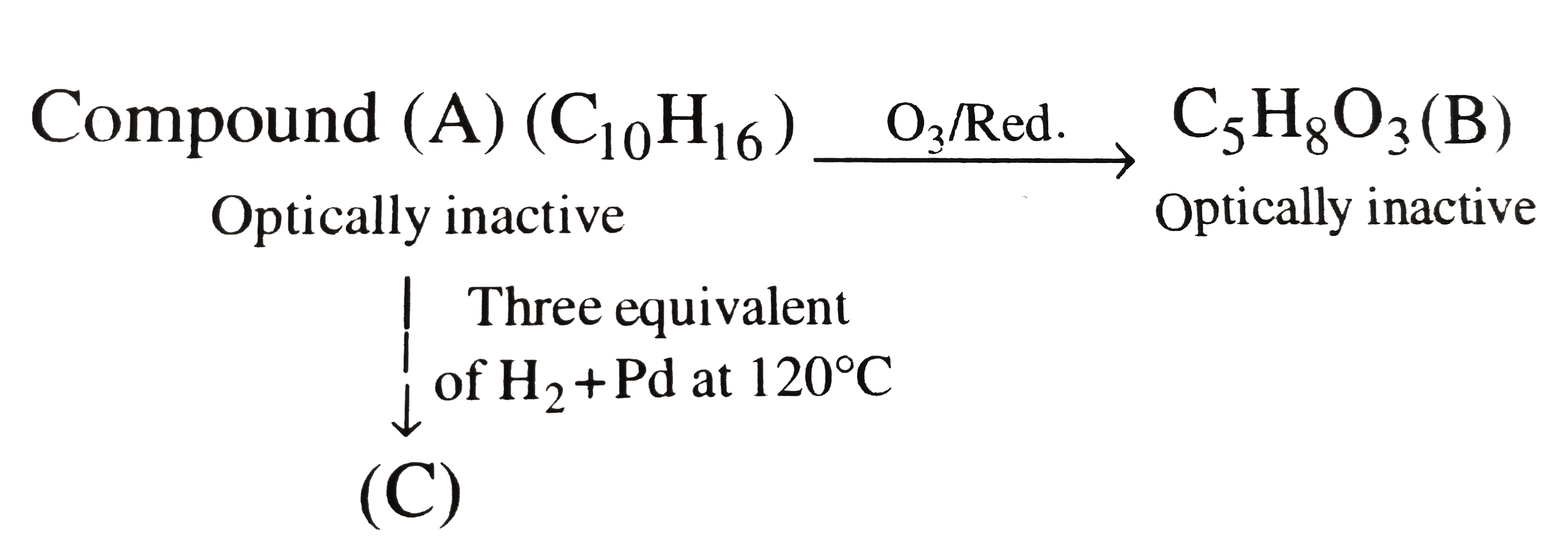Compounds 'I' and 'J' both have same M.F. i.e.C7H14 4. Both are optically active and both rotate the plane-polarized light in the same direction. On catalytic hydrogenation 'l' and 'J'? yields same compound 'K' (C7H16) which is optically active. Then the structure of 'K' isSolution in Telugu
2,3 – dimethyl butane
neo-heptane
3-methylhexane
isoheptane
The correct Answer is:C
Alkanes preparation method
Topper's Solved these Questions
- BOOK - AAKASH SERIESCHAPTER - HYDROCARBONSEXERCISE - ADDITIONAL PRACTICE SHEET ( LEVEL-II (LECTURE SHEET (ADVANCED) (MORE THAN ONE CORRECT ANSWER TYPE QUESTIONS)))20videos
HYDROCARBONS
- BOOK - AAKASH SERIESCHAPTER - HYDROCARBONSEXERCISE - ADDITIONAL PRACTICE SHEET ( LEVEL-II (LECTURE SHEET (ADVANCED) (LINKED COMPREHENSION TYPE QUESTIONS(PASSAGE-I))))3videos
HYDROCARBONS
- BOOK - AAKASH SERIESCHAPTER - HYDROCARBONSEXERCISE - PRACTICE SHEET (EXERCISE - VI (LEVEL-II (MATRIX MATCHING TYPE QUESTIONS )))4videos
HYDROCARBONS
- BOOK - AAKASH SERIESCHAPTER - GENERAL ORGANIC CHEMISTRYEXERCISE - QUESTIONS FOR DESCRIPTIVE ANSWERS35videos
GENERAL ORGANIC CHEMISTRY
- BOOK - AAKASH SERIESCHAPTER - HYDROGEN AND ITS COMPOUNDSEXERCISE - QUESTIONS FOR DESCRIPTIVE ANSWERS20videos
HYDROGEN AND ITS COMPOUNDS
Similar Questions
Which would give isobutane on decarboxylation ?
View SolutionAddition of HX on alkene proceed through formation of carbocation . This reaction is follows Markovnikov's rule. According to markovnikov's rule addition of electrophile occurs on that carbon of alkene which have more number of -H atom
Ph−CH=CH2−−→HXPh−x∣CH−CH3(major)+Ph−CH2−CH2−X(minor)
Which of the following alkenes can produce diastereomers03:06View Solution 03:16View Solution
03:16View SolutionMention the hybridisation stste of each carbon in the following compounds.
CH3−CH=C=O,CH3−C≡C−CH3,CH3COCH3andCH2=CHCN04:35View SolutionWhy the use of hard water is disadvantages?
02:22View Solution
If the both compound (A) and (B) are optically active, the possible structrue of (A) is:View Solution
If both compounds (A) and (B) are optically active, the possible structrues of (B) are:03:10View SolutionGive the structure of an optically active alkene (A) having the lowest molecular mass, which on catalytic hydrogenation gives an optically inactive compound (B) .
View Solution(A) and (C) are different compounds and rotate the planepolarised light in the same direction, and both are dextrorotatory. Both (A) and (C) do not show diastereomers. Which of the following statements are correct ?
03:10View SolutionAn optically active compound A with molecular formula C8H14 undergoes catalytic hydrogenation togive meso compound, the structure of (A) is:
06:58View Solution
The only correct combination in which both compounds can have two optical active stereoisomers ?View SolutionC(C_(6)H_(12)) , and optically active dydrocarbon which on catalytic hydrogenation gives an optically inactive compound, C_(6)H_(14) .
01:15View SolutionOptical active compounds have same
01:34View SolutionC(C6H12), and optically active dydrocarbon which on catalytic hydrogenation gives an optically inactive compound, C6H14.
01:15View Solution(1) Give structure and IUPAC name of an optically active alkane having lowest molecular mass. Is there another alkane of the same molecular mass that is also optically active? (2) Give example of a compound which exhibits both optical & geometrical isomerism.
02:46View Solution

